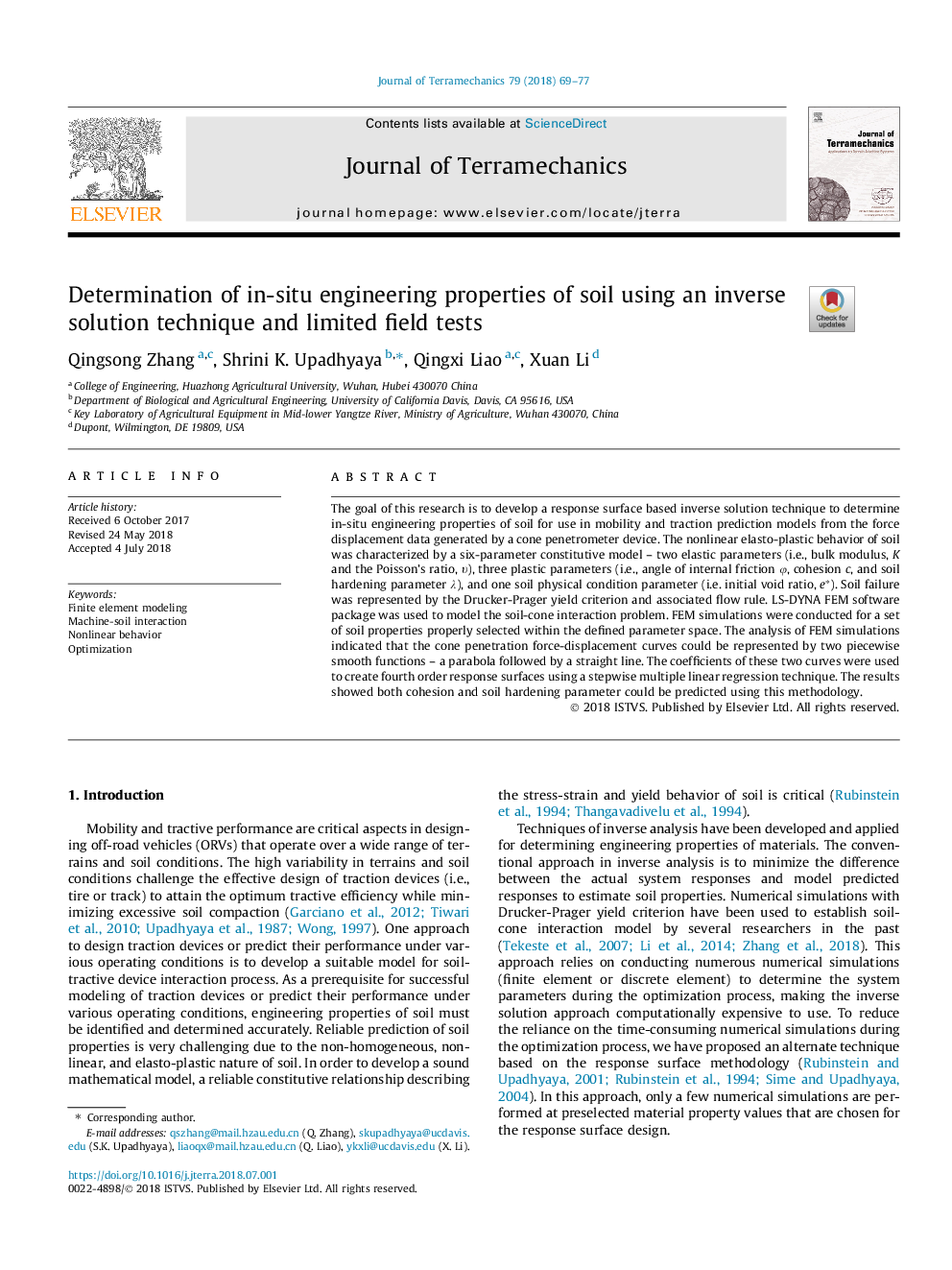| Article ID | Journal | Published Year | Pages | File Type |
|---|---|---|---|---|
| 7178413 | Journal of Terramechanics | 2018 | 9 Pages |
Abstract
The goal of this research is to develop a response surface based inverse solution technique to determine in-situ engineering properties of soil for use in mobility and traction prediction models from the force displacement data generated by a cone penetrometer device. The nonlinear elasto-plastic behavior of soil was characterized by a six-parameter constitutive model - two elastic parameters (i.e., bulk modulus, K and the Poisson's ratio, Ï
), three plastic parameters (i.e., angle of internal friction Ï, cohesion c, and soil hardening parameter λ), and one soil physical condition parameter (i.e. initial void ratio, eâ). Soil failure was represented by the Drucker-Prager yield criterion and associated flow rule. LS-DYNA FEM software package was used to model the soil-cone interaction problem. FEM simulations were conducted for a set of soil properties properly selected within the defined parameter space. The analysis of FEM simulations indicated that the cone penetration force-displacement curves could be represented by two piecewise smooth functions - a parabola followed by a straight line. The coefficients of these two curves were used to create fourth order response surfaces using a stepwise multiple linear regression technique. The results showed both cohesion and soil hardening parameter could be predicted using this methodology.
Related Topics
Physical Sciences and Engineering
Earth and Planetary Sciences
Geotechnical Engineering and Engineering Geology
Authors
Qingsong Zhang, Shrini K. Upadhyaya, Qingxi Liao, Xuan Li,
